NOTICIAS DE LETEST
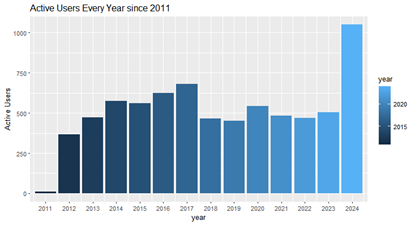
2024: Un año de crecimiento e impacto
Al reflexionar sobre 2024, celebramos un año de increíble crecimiento e innovación en eButterfly. Con miles de nuevos registros, una comunidad global en expansión y tecnología de vanguardia, estamos transformando la conservación de las mariposas. ¡Gracias por ser parte de este viaje—2025 promete logros aún mayores!

Belice: una joya natural escondida
Ubicado en el corazón de Centroamérica, Belice es un santuario de selvas tropicales exuberantes, vibrantes arrecifes de coral y una rica diversidad cultural que atrae al espíritu aventurero. Únete a Peter Hall y su esposa Judy mientras escapan del invierno de Toronto para explorar este paraíso tropical. Desde las selvas llenas de mariposas del Table Rock Jungle Lodge hasta la impresionante Reserva Forestal Pine Ridge, su viaje revela la deslumbrante biodiversidad de Belice: 118 especies de mariposas, 123 especies de aves y muchas otras maravillas. Con eco-lodges que ofrecen tours guiados, cocina local y el aroma del café recién tostado, este viaje es una inmersión encantadora en el esplendor de la naturaleza, ahora inmortalizado en eButterfly.
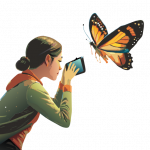
Descubre el arte de identificar mariposas en eButterfly
Participar en la identificación de observaciones en eButterfly es una actividad emocionante y colaborativa que todos pueden disfrutar. En este artículo, te contamos todo lo que necesitas saber sobre el sistema de identificación de eButterfly y cómo puedes contribuir a la ciencia y la conservación de mariposas.
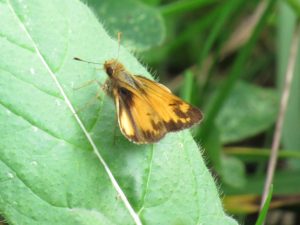
Hespérida Zabulón encontrada en Vermont
A Terri Armata, una de nuestras voluntarias estrella del atlas de mariposas, le tomó menos de un mes encontrar y documentar la especie número 119 de mariposas en Vermont, y su cuarto récord estatal. El 22 de agosto, localizó un macho fresco de Hespérida Zabulón (Lon Zabulon) en un campo sin segar lleno de Trébol […]

El Sachem Skipper es la última especie nueva de mariposa registrada en Vermont
¿Crees que identificar una mariposa es fácil? ¡Piénsalo otra vez! Terri Armata se enfrentó a un reto único al intentar clasificar una especie desconocida. Descubre cómo la inteligencia artificial la ayudó a resolver este misterio en nuestro último post.
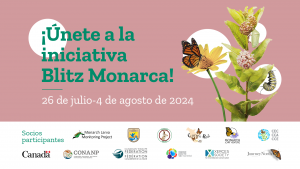
Únete al Blitz Internacional de Monitoreo de Monarcas (del 26 de julio al 4 de agosto de 2024)
El Blitz Internacional de Monitoreo del Monarca invita a los científicos ciudadanos de toda América del Norte a unir fuerzas para ayudar a proteger y conservar al querido y emblemático Monarca.

Grabación del Lanzamiento de la Aplicación Móvil de eButterfly!
Queremos extender nuestro más sincero agradecimiento a todos los que asistieron a nuestro evento de lanzamiento de la aplicación móvil. Su entusiasmo y apoyo significan el mundo para nosotros, ¡y estamos encantados de haber compartido este emocionante hito con ustedes!
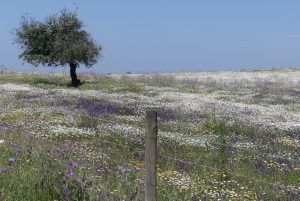
Destino de mariposas en el sur de Portugal
Acompaña a Peter Hall y su esposa Judy en su fascinante viaje por el sur de Portugal, donde exploraron las regiones de Algarve y Alentejo en busca de mariposas y aves raras y endémicas. Desde coloridos humedales hasta pintorescos valles fluviales, esta aventura llena de descubrimientos naturales te llevará a algunos de los mejores destinos de observación de mariposas en Europa. ¡No te pierdas este emocionante relato en nuestro blog de ciencia comunitaria dedicado a la conservación de mariposas!
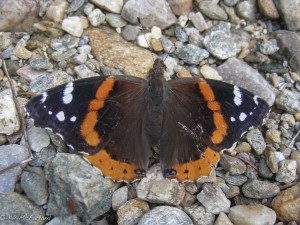
Vanessa amirales volando hacia el norte
En este momento, cientos de miles, quizás millones, de mariposas están revoloteando hacia el norte. En un día soleado de la última semana en el noreste de América del Norte, era imposible no notarlas pasando o deteniéndose en una flor para abastecerse. No, no son Monarcas. Estas son Vanesas amirales, y aproximadamente cada década, hay una migración masiva hacia el norte desde algún lugar del sur. Es una de las muchas grandes migraciones que a menudo pasan desapercibidas para muchas personas.

¡Últimas actualizaciones listas y muchas más en camino!
Una nueva temporada de observación de mariposas no solo trae flores sino también una versión fresca de nuestra plataforma. Es posible que ya hayas notado algunos cambios pequeños en el sitio, como la nueva estadística de “Identificadores” en la página de inicio. Esta característica destaca a los numerosos usuarios que ayudan a identificar observaciones, ¡ahora […]
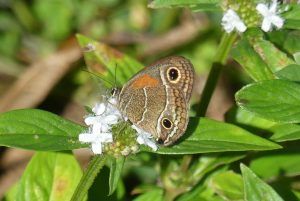
Mariposas de la República Dominicana
En este post, Peter Hall relata su experiencia observando mariposas en la República Dominicana durante el invierno boreal. Sin alquilar un automóvil, exploró la península de Samaná a pie desde un pequeño hotel en Las Galeras. Durante su semana allí, identificó 48 especies de mariposas, incluyendo endémicas de la isla de la Española. Destaca la presencia de especies como Calisto y diversos esfíngidos. Además, menciona el avistamiento de especies raras y endémicas, como la Hesperiidae V-mark haitiana y la mariposa Dinamina. También comparte hallazgos sobre las distribuciones de algunas especies y las fuentes literarias consultadas.
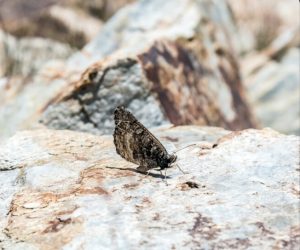
La mariposa más alta de América del Norte registrada.
Posada en la zona alpina del Monte Whitney, la montaña más alta de California, se encuentra una población de la subespecie del Ártico Chryxus conocida como el Ártico Ivallda (Oeneis chryxus ivallda). Gracias a Zachary MacDonald y sus colegas que la encontraron, también se le conoce como la mariposa más alta de América del Norte. El equipo publicó recientemente sus hallazgos y ahora se comparte con e-Butterfly.

De Canadá a México: La Épica Ultramaratón de Anthony Battah por las Mariposas Monarca
Hoy, 1 de noviembre, el Día de los Muertos, Anthony Battah (@ultra-trail Monarque) concluye su ultramaratón hasta los sitios de hibernación de la mariposa monarca en el estado de Michoacán, México. ¡4500 km (!!!!!) después de haber partido del #Insectarium para su travesía el 29 de julio pasado. Anthony eligió recrear la ruta migratoria de […]
(English) Ninth Annual Report to Tohono Chul Docent, Volunteer and Staff Lépidoptérophiles
Disculpa, pero esta entrada está disponible sólo en English.
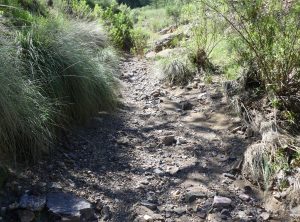
Mariposas y sequía en el sureste de Arizona
Por Peter Hall, asesor de eButterfly Una sequía a largo plazo ha afectado a muchas partes del oeste de Estados Unidos intermitentemente durante años. El sureste de Arizona ha sido propenso a estos periodos de sequía, a veces con efectos graves en la vegetación y la vida silvestre. Andrew Hogan, en una publicación anterior en […]

El Mapa (Araschnia levana) – Theo de la Ruelle
La mariposa del mapa (o simplemente el mapa) (Araschnia levana) es una mariposa común en los Países Bajos y se puede encontrar en todo nuestro país. Por otro lado, en el conteo anual de mariposas, el mapa no entra en el top diez y en la mayoría de los años ni siquiera llega al top veinte.

Seminario web – Aprendiendo a identificar las mariposas de Canadá (17 de julio, 18:00 EST)
¡Únete a nosotros para un emocionante webinar (en Ingles) sobre “Aprendiendo a identificar las mariposas de Canadá” con una destacada entomóloga y usuaria destacada de eButterfly, Kirstyn Eckhardt!

Mariposas raras en el norte de Nueva York
Entre los hábitats más únicos y en riesgo en el este de América del Norte se encuentran las llanuras de arena en el centro del estado de Nueva York. Las dunas localizadas y ondulantes de esta área están cubiertas de pinos resineros con una cubierta vegetal baja dominada por lupinos de sol. Esta combinación también las convierte en uno de los últimos bastiones para varias mariposas que también están en peligro.
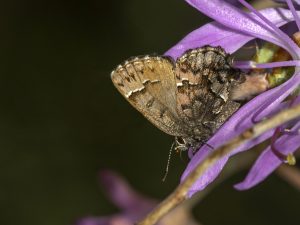
Después de dos décadas de búsqueda, se descubre una mariposa rara durante el Atlas de Mariposas de Vermont.
Casi cada primavera durante los últimos 21 años, Bryan Pfeiffer ha recorrido algunos de los pantanos más remotos de Vermont. En el camino, donó sangre a moscas negras, se hundió en el barro y, en ocasiones, se preguntó si saldría vivo de ciertos pantanos.
(English) Webinar recorded – eButterfly Global (V 6.50)
Disculpa, pero esta entrada está disponible sólo en English.
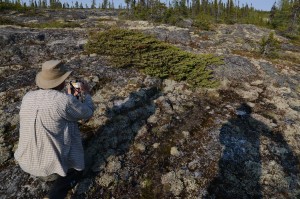
Diez pasos para lograr una mejor fotografía de mariposas (nueva cámara opcional)
(English) The butterflies are out and many of us are eager go butterflying with our cameras and bring images home to share. While I don’t fancy myself as an expert photographer, I sure love to photograph butterflies and other insects. I realized over time that many tricks I took for granted to approach butterflies were foreign to many naturalists especially those new to it. After sharing some tips on how to approach butterflies and better photograph them with friends and colleagues and seeing them come back with much improved results and more species than they use to find, I thought this might be helpful to share.

Vermonteses invitados a ayudar a buscar mariposas
(English) Vermonters now have another excuse to get outside on sunny days: to join a statewide survey of the most angelic insects—butterflies. The Vermont Center for Ecostudies (VCE) is recruiting volunteers to help search fields and fens, mountains and meadows, and even their own backyards to help document the status of Vermont’s butterflies.

¡Los números de las colonias de hibernación de las mariposas monarca han salido, y no son tan buenos!
La mariposa monarca migratoria del este está enfrentando una seria amenaza: nuevos informes revelan una disminución significativa en la población y una pérdida de hábitat en los bosques donde pasan el invierno cada año. En solo un año, el área ocupada por las mariposas monarca en su hábitat de invernada disminuyó un 22%, de 7 […]

eButterfly: un año en revisión y una mirada hacia el futuro
A medida que llega el momento de hacer balance, el equipo de eButterfly está lleno de gratitud por todo lo que se ha logrado en 2022. Desde el monitoreo individual de mariposas hasta la recopilación de datos sobre la distribución y abundancia de especies, la contribución de nuestra comunidad de participantes apasionados es invaluable para la investigación de lepidópteros.
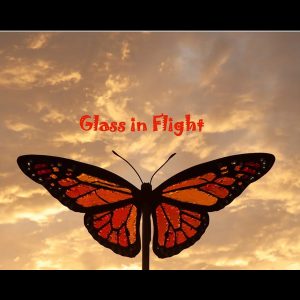
Exhibición de Glass in Flight en el Museo del Desierto de Arizona Sonora.
(English) Glass in Flight, the amazing new glass and steel sculpture exhibit of sparkling butterflies, dragonflies, bamboo, bees and beetles by Alex Heveri, has alighted at the Arizona Sonora Desert Museum!
(English) Rare Butterfly Eaten by Endangered Frog
(English) While on a two-week holiday in Arizona starting in late October, I visited the Ramsey Canyon Nature Conservancy Reserve in the Huachuca Mountains. On a hike up the canyon creek, I came across a small pond covered with a pond weed. A rare and very local Chiricahua White (Neophasia terlootii) orange female (photo 1) landed on the pond weed to drink (strange in itself).
(English) Top Observers of the 2022 Butterflying Season!!
(English) If you want to see where you ranked, as well as other stats such as the number of photos, identifications, and individuals for your specific state/province, make sure to visit our User Explorer
(English) Community Scientist Discovers New Butterfly Species for Vermont
(English) Terri Armata, one of Vermont’s most ardent butterfly watchers, has done it again. For the second year in a row she has recorded a new butterfly species for Vermont. On June 30th in the far southwest corner of Vermont she photographed a Northern Oak Hairstreak (Satyrium favonius ontario) among the Banded Hairstreaks (Satyrium calanus) nectaring at Common Milkweed.
(English) Let your voice be heard and help shape the future of eButterfly!
(English) Help us shape eButterfly for the coming years!.
We are putting together our strategic plan and want to hear from you!
Please fill out this 1-minute anonymous survey and let your voice be heard!
(English) What is flying around? New eB experimental feature!
(English) Any Plans for this weekend? Do you want to know what is flying around today in your area?
We just put together an app that helps you with that!
Just draw around your area of interest, wait for a few seconds, and see all the species that had been reported there and when it is more probable that they’ll be flying there!
(English) Most Wanted Butterflies!
(English) We just compiled a list of the “Most Wanted Butterflies” at eButterfly.
We have very few records of these species, and they would be lifers for most people.
How many of these butterflies do you have on your life list?
(English) Glass in Flight, Definitively Worth Checking this out!
(English) Glass in Flight, the amazing new glass and steel sculpture exhibit of sparkling butterflies, dragonflies, bamboo, bees and beetles by Alex Heveri, will soon be flying on its way to the Arizona Sonora Desert Museum!
(English) Join the International Monarch Monitoring Blitz (July 29-August 7)
(English) The International Monarch Monitoring Blitz invites community scientists from across North America to come together with the shared goal of helping to protect and conserve the beloved and emblematic monarch butterfly. Data collected by volunteers each year support trinational efforts to better understand the monarch butterfly’s breeding productivity, range, and timing in North America.
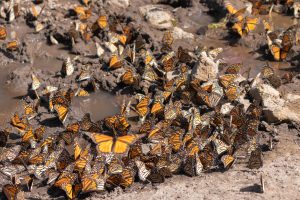
¡Únete a nuestro nuevo foro de discusión ahora!
¡Nuestra visión es hacer de eButterfly la comunidad de mariposas más grande del mundo!
Para lograr ese objetivo, acabamos de lanzar nuestro foro de discusión. En este lugar, interactuará con todos los demás usuarios de eButterfly y hablará sobre cualquier cosa relacionada con las mariposas, desde identificaciones, ciencia, historias, solicitudes de funciones y mucho más.
(English) Learn all about eButterfly V6.0 Webinar Recorded
(English) Join Rodrigo Solis Sosa, our Human Network and Data Coordinator, as he explains how to use eButterfly and our latest updates on eButterfly V6.0 in this recorded webinar from July 25th. We hope you will join the eButterfly community to help us track butterflies for science and conservation.
(English) eButterfly V6.0 is here!
(English) After almost a year in the making, thousandths of development hours, and an immense amount of feedback from our users. July 20th at midnight (EST), the wait will be over, eButterfly V6.0 is here!
We made a considerable effort to make this new version as similar as possible to the previous but simultaneously with several key new features and massive performance improvements.
Please join us tomorrow, Thursday, July 21st at 4 PM (EST) for a webinar where we will introduce all those new features.
(English) eButterfly Webinar on July 21st, 4 PM (EST)
(English) Do you want to learn about the latest features released on eButterfly such as computer image recognition, a discussion forum, eBLabs, and more? Or maybe you’d like to learn how to use eButterfly for its full potential? If so, don’t miss our upcoming webinar on Thursday, July 21st, at 4 PM (EST) with Rodrigo Solis Sosa, our Human Network and Data Coordinator. Pre-register here: https://bit.ly/3IxTUSj
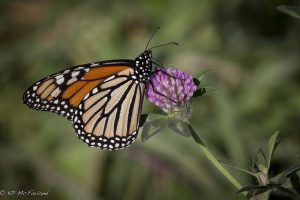
Aumento de la población Mariposa monarca del este
La presencia de Mariposas monarca en los bosques de México este invierno pasado fue 35% mayor que el año anterior, según la encuesta más reciente liderada por WWF México. Este aumento marca una señal de recuperación, aunque frágil, y da un motivo de esperanza en un contexto de varias décadas de declive para la especie icónica. Según la encuesta, el área forestal ocupada por las colonias de Mariposas monarca en México durante la temporada de hibernación 2021-2022, la presencia de la especie en la famosa Reserva de la Biosfera de la Mariposa Monarca de México y sus alrededores creció de 2.1 hectareas en diciembre de 2020 a 2.84 hectareas en diciembre de 2021. .
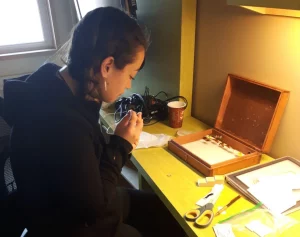
Inuk identifica nueva subespecie de mariposa mientras trabaja con el Montreal Insectarium
Era un día despejado de verano de 2019 cuando Siaja Parceaud-May notó una mariposa de azufre de Booth que tenía algunas “diferencias notables”. Estaba aproximadamente a una hora al norte de su comunidad natal de Kuujjuaq en la región de Nunavik en Quebec con un equipo de entomólogos e investigadores del Insectarium de Montreal, aprendiendo a identificar y recolectar mariposas. A lo largo de una cresta arenosa y despejada hacia la bahía de Ungava, vio a la criatura peculiar que sería enviada a Montreal para un análisis más detallado. Su corazonada resultó ser correcta. Más de un año después, el director del insectario, Maxim Larrivée, le escribió para confirmarle que había descubierto una nueva subespecie de Colias tyche. Para su sorpresa, se llamaría en su honor: Colias tyche siaja.

(English) Parnassius iBook for our community
Estamos muy contentos de que Kim Moss, la Dra. Diane Debinski y Simone Durney finalmente hayan lanzado su iBook “Wings that Make Waves” y agradecidos de que compartan su iBook con nosotros.
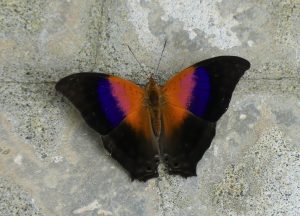
Panama: Morfos, riodínidos y mimics
Por Peter Hall, asesor científico y administrativo de eButterfly. -En diciembre de 2019, con el Covid-19 como un rumor proveniente de China, reservé unas vacaciones de dos semanas para diciembre de 2020 en Panamá para mi esposa y para mí. Llegado ese momento, con la pandemia en todo el mundo, las instalaciones del alojamiento ecológico que reservé amablemente nos permitieron posponer nuestro viaje por un año más. Cuando llegó noviembre de 2021 y los números de Covid habían disminuido en Ontario y Panamá, decidí tomar un vuelo a Panamá desde Toronto a fines de mes. Resulta que aprovechamos una ventana de oportunidad de dos semanas antes de que Omicron comenzara a cerrar el mundo nuevamente.
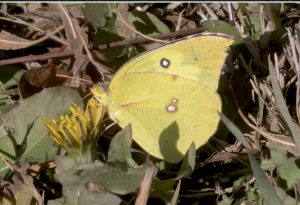
Resumen del año de eButterfly 2021
Con listas de verificación desde los trópicos de Panamá hasta las islas de Hawai y tan al norte como Yellowknife en los Territorios del Noroeste de Canadá, 2021 fue un año increíble para eButterfly. No hay duda de que 2021 fue una vez más un año desafiante, que llevó a más personas a la naturaleza para encontrar consuelo, esperanza y un sentido de conexión con los demás. ¡Gracias por estar con nosotros!
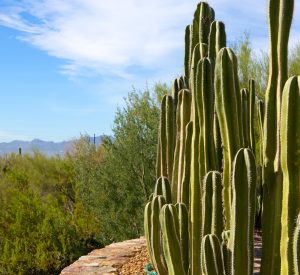
Hallazgos del parque Tohono Chul: mariposas en el desierto
Andrew Hogan, ávido mariposas y usuario de eButterfly desde hace mucho tiempo, comparte con nosotros sus hallazgos del Tohono Chul Park en Arizona, donde ha realizado un recuento semanal de mariposas desde 2014. Conozca algunos de sus hallazgos y tal vez se inspire para comenzar un recuento semanal cerca de ti!
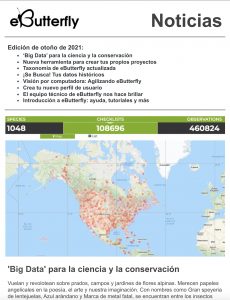
eButterfly Noticias Edición de Otoño 2021
Edición de otoño de 2021: ‘Big Data’ para la ciencia y la conservación, Nueva herramienta para crear tus propios proyectos, Taxonomía de eButterfly actualizada, ¡Se Busca! Tus datos históricos, Visión por computadora: Agilizando eButterfly, Crea tu nuevo perfil de usuario, El equipo técnico de eButterfly nos hace brillar, Introducción a eButterfly: ayuda, tutoriales y más.
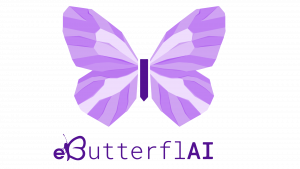
Visión por computadora: Agilizando a eButterfly
eButterfly, en asociación con el Instituto de Montreal para Algoritmos de Aprendizaje (MILA), ha creado eButterflAI, un algoritmo avanzado de reconocimiento de imágenes que ha aprendido a reconocer el género y la especie de la mayoría de las mariposas de América del Norte en función de su ubicación e imagen. La herramienta pronto llegará a eButterfly.org para que todos la utilicen. Aprende más…
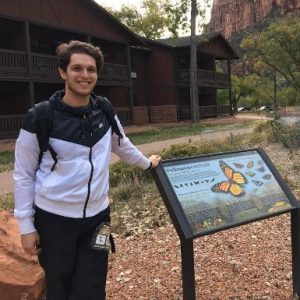
Seminario web grabado: Uso de datos científicos comunitarios para monitorear mariposas
Los paseos con mariposas no solo son una actividad relajante, sino también una fuente invaluable de datos para la ciencia. Únete al Dr. Federico Riva mientras analiza la importancia de las listas de verificación registradas en eButterfly para su trabajo: (i) el uso de listas de verificación de mariposas para comprender los cambios de población e informar las prácticas de conservación; (ii) la importancia de la “detección imperfecta” – nuestra incapacidad para ver todas las mariposas cuando las estamos buscando – y cómo podemos maximizar el número de mariposas que vemos en un sitio; (iii) su trabajo actual con eButterfly, que aprovecha miles de observaciones de científicos comunitarios para ayudar a comprender las regiones de prioridad de conservación en América del Norte. (Video en Ingles)
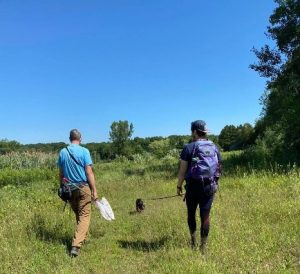
Becario postdoctoral se une al equipo de eButterfly
Estamos muy contentos de que el Dr. Federico Riva se una a nosotros para una breve estancia. Durante los próximos meses, trabajará para mapear la distribución de las mariposas de América del Norte, evaluar las tendencias en sus poblaciones y ayudar a informar las prácticas de monitoreo efectivas. Le pedimos que compartiera un poco sobre su experiencia y su trabajo con las mariposas. Bienvenido al equipo de eButterfly Dr. Riva!
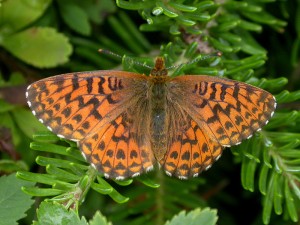
Taxonomía de eButterfly actualizada
Con meses de preparación, acabamos de realizar mejoras y correcciones sustanciales en la columna vertebral taxonómica de eButterfly. Esto mejorará drásticamente la experiencia del usuario al ingresar listas de verificación y explorar datos. Conozca todos los detalles …
(English) eButterflying Your 4th of July Count
(English) The 4th of July Butterfly Count season is here! Each year, hundreds of butterfly enthusiasts participate in a cooperative effort to count butterflies within established 15-mile diameter survey circles. Most counts depend on the efforts of multiple parties, with each individual or team checking different parts of the survey circle, then combining their counts into a final count total. These tallies are then used to compare between years. The counts are an important and long-running survey that help understand changes in butterfly populations at large scales. Your checklists can also be important for eButterfly too!
(English) New Feature Alert: Project Pages
(English) Our new eButterfly Projects tool allows you to easily and quickly create a hub for your event, club, class, or organization. An eButterfly Project creates a space for you that pools observations of eButterfly users together. You can automatically include all of the checklists and observations that fit the places, taxa, users, or dates that you specify. Whether you’re starting a community science effort, creating a home for your user group, or running a butterfly bioblitz; eButterfly Projects is the new tool for you.
(English) Watch Our Recorded Webinar and Learn How to eButterfly!
(English) Every time butterfly watchers raise binoculars and cameras to record a butterfly sighting, they collect important data. Recording the number, date, and location of each and every butterfly, no matter how common or rare, may seem trivial, even repetitive— but this detailed information can be invaluable to science and conservation. Join Rodrigo Solis Sosa, our Human Network and Data Coordinator, as he explains how to use eButterfly in this recorded webinar from April 27.
(English) New Feature Alert: User Profiles
(English) Have you ever wondered who is helping to identify and verify your butterfly observations? Or maybe you wanted to learn more about someone that sees a lot of butterflies in your area? Now you can! We just released the first version or eButterfly user profiles. The profile page has a small image, the user level, stats, and their most recent photos. We’ll be adding more features in the future too. Click on any user name in eButterfly and view their profile. Fill out your profile so that others can learn about you too! Learn how…
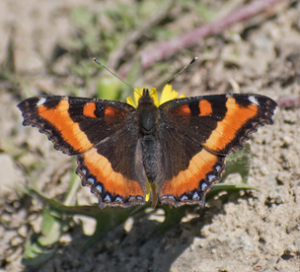
Climate Generalist Butterflies Expected to be Winners Under Climate Change in Canada
Forecasting species responses to climate change is integral to the development of adaptive and practical conservation decisions. Butterflies are climate-constrained in at least two ways, as ectotherms, the climate has a defining role in dictating where butterflies can live. Additionally, a warming climate may have huge impacts on their host plant availability. These constraints could mean certain butterfly species may have to move north, or up in elevation, to stay within their preferred temperature range. Predicting how butterflies might respond to such temperature and host plant shifts could inform decisions involving conservation prioritization, species management, and natural resource management.
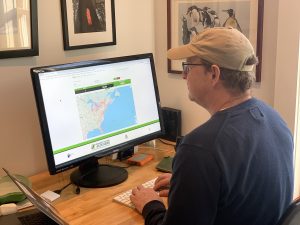
(English) New eButterfly Updates Just in Time for Spring
(English) We’re excited to announce some great improvements and new tools for eButterfly that we just released, with even more on the way. Our team has worked hard all winter to improve how the communications center operates, adding additional languages, upgrading the checklist submission process, improving the user experience for viewing checklists, updates that increase the performance of eButterfly, and many minor bug fixes.
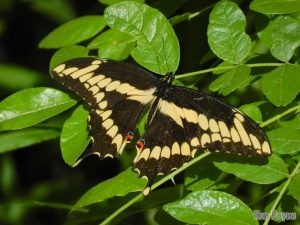
(English) A Giant Leap for a Butterfly in Vermont and Beyond
(English) In 2010 when the largest butterfly in North America fluttered among Ardys Fisher’s flowers at the end of July, she knew it was something neat. Now, our study published in Frontiers in Ecology and Evolution this week shows an unusually rapid northward range shift by the Eastern Giant Swallowtail over the last two decades.
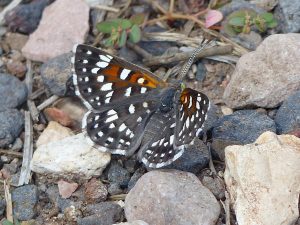
(English) Dramatic Decline in Western Butterfly Populations Linked to Fall Warming
(English) Western butterfly populations are declining at an estimated rate of 1.6% per year, according to a new report published this week in Science. The report looks at more than 450 butterfly species, including the western monarch, whose latest population count revealed a 99.9% decline since the 1980s.
(English) 2020 eButterfly Year in Review
(English) From the first observation of 2020, a Gulf Fritillary nectaring on the Gulf coast of Florida submitted by Gary Leavens, to a Long-tailed Skipper nectaring at the end of December shared by mbspang, butterfly watchers added over 38,500 butterfly records to the ever growing eButterfly database of checklists. The reports fluttered in all summer long. We had more than 8,300 checklists with over 22,000 photographs comprising 523 species of butterflies reported during the year.
(English) International Monarch Monitoring Blitz 2020
(English) From July 24 to August 2, 2020, volunteers in Canada, Mexico and the United States helped monarch experts gain more information to enable better understanding of the distribution of the migratory monarch butterfly, an emblematic North American species. This year 520 volunteers across 68 states and provinces participated in the Blitz. They recorded 9,649 monarchs at various stages of their life cycle, from eggs to full-fledged butterflies. And together, they monitored 40,321 milkweed plants, the sole food source for monarch caterpillars.
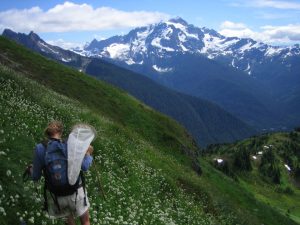
(English) Climate Change Could Cause Decline of some Alpine Butterfly Species
(English) The long-term effects of climate change suggests that the butterfly effect is at work on butterflies in the alpine regions of North America, according to a new study by University of Alberta scientists—and the predictions don’t bode well. The researchers used climate change models to understand the effects of changing ecosystems on alpine butterflies in North America. The results show that alpine butterflies who have specialized diets, meaning that they feed on one or a few plants, are more vulnerable to climate change because of fluctuations in their food. On the other hand, butterflies that have diverse diets are less likely to be affected.
(English) The Quest for My Biggest Butterfly Holy Grail – Jamaican Giant Swallowtail
(English) ‘Holy Grail’ butterflies are those rare, remote, hard-to-find, attractive species that linger in the imagination. For Peter Hall, the holiest of grails for many years, beginning in his childhood, was the Jamaican Giant Swallowtail (Papilio homerus). It was more like a myth than an actual species – seen by few and living in only two isolated and diminishing locations in the remoter rainforest of the Caribbean island, Jamaica.
(English) eButterfly’s Commitment to Fostering Inclusivity and Racial Justice
United by our passion for butterflies, eButterfly is a community where we share observations, photographs, and expertise. We also share a deep conviction that our collective experiences and observations will ultimately make the world a better place for butterflies, people, and the environment we inhabit together.

(English) Recorded eButterfly Webinar Now Available
(English) Are you looking to turn your love of butterfly watching into real science and conservation? Try eButterfly! Join eButterfly’s Rodrigo Solis for an hour-long recorded webinar and learn the basics and more about how to use eButterfly. Watch as he goes through the three easy steps to adding a butterfly checklist, how to use the new identification tool, explore data, and more. All from the comfort of your own screen and at your own pace. What are you waiting for? Let Rodrigo help get you started!
En busca del santo grial de mariposas
For every butterflier, I would be willing to bet that over the years, when out on field trips, you have had some ‘special’ butterflies in mind that you hope to come across – in other words, ‘Holy Grails’ or, simply, grails.
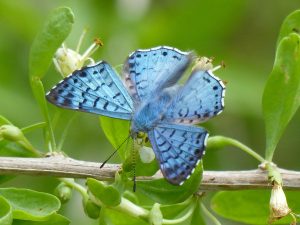
De Panamá al Ártico, tenemos un nuevo eButterfly
(English) It’s been over a year in the making. We’re excited to announce a completely new and retooled eButterfly. Now you can track butterflies you’ve seen from Panama to the Caribbean and north to the far reaches of the arctic, covering over 40 countries and more than 3,000 species of butterflies. Explore the new look and experience the social media-inspired features we’ve added to facilitate sharing and communication between users, or use the new efficient and fun, crowd-sourced verification tool. Help us build big butterfly data for science and education. Learn more…
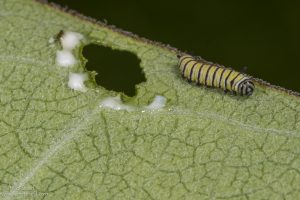
Annual Monarch Breeding Population Size in Canada Linked to Spring Migration and Recolonization
New research published in Frontiers in Ecology and Evolution by scientists Tara Crewe (Bird Studies Canada), Greg Mitchell (Environment and Climate Change Canada) and Maxim Larrivée (Montréal Insectarium) highlights the importance of Canadian summer breeding habitat for the eastern North American migratory Monarch butterfly population. The study is based on 15 years of community science […]
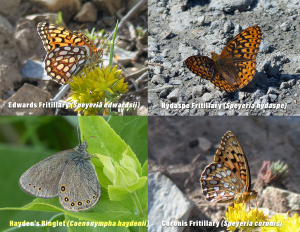
A Crazy Place for Fritillaries
By Peter Hall, Scientific and administrative advisor to e-Butterfly One of the most difficult groups of butterflies to identify, particularly in western North America, is that of the greater fritillaries. On a recent camping trip to Alberta and Montana, the butterflies in this large group were high among the list of butterfly target species I had […]
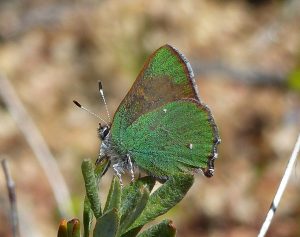
Super Bloom and Super Butterflies in Southern California
By Peter Hall, scientific and administrative advisor to eButterfly, Ottawa, Ontario Following a wet and cool winter in Southern California, this spring created a ‘super bloom’ of flowering plants and a visit there also produced a super butterfly crop of observations. For three weeks, from March 14 to April 3, my wife Judy and I […]
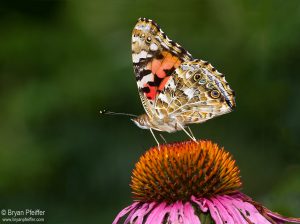
Painted Lady Butterflies are on the Move!
Painted Lady butterflies by the thousands are pushing northward in southern California. Like Monarch butterflies, with which they are sometimes confused, Painted Ladies are now heading northward to breed. But they’re not as predictable as Monarchs. Where exactly are they going? With a massive effort by volunteer citizen scientists, we can begin to piece together this […]
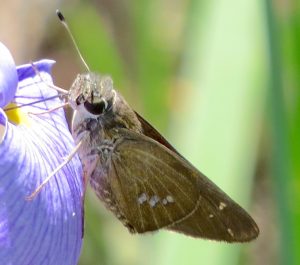
Butterfly Records for South Carolina: 1 June – 30 November 2018
By Dennis M Forsythe, Emeritus Professor of Biology, The Citadel, Charleston, SC Other than a successful Carolina Butterfly Society sponsored weekend 2-3 June to the Francis Marion National Forest, butterfly numbers and diversity were very low across all of South Carolina during June-August. A Midlands Chapter CBS field trip scheduled for 25 June to the Enoree District, […]
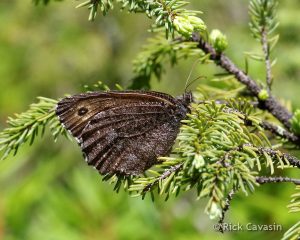
Expedition James Bay 2018
By Rodrigo Solis On June 19, 2015, five intrepid lepidopterists – Jacques Larrivée, Chris Schmidt, Rick Cavasin, Peter Hall and Max Larrivée – set out to explore the east side of James Bay in Quebec and identify the bogs to be monitored along a 10 degree latitudinal transect. Fast-forward to 2018 and this time, as a […]
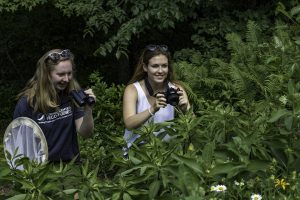
New Study Reveals e-Butterfly Provides Unique and Important Data
Opportunistic data collection programs like e-Butterfly allow volunteers to report species observations from anywhere, and can quickly assemble large volumes of both historic and current data. But how valuable is the data? A new peer-reviewed study by researchers at the University of Ottawa used eButterfly data and a comparable dataset of professionally collected observations across Canada to […]

Take Part in the 2018 International Monarch Monitoring Blitz!
From July 28 to August 5, butterfly watchers across North America are invited to take part in the International Monarch Monitoring Blitz to help provide a valuable snapshot of Monarch population status across their late summer range. Participation is simple: find a milkweed patch and look for Monarchs, counting the number of stems you examined […]
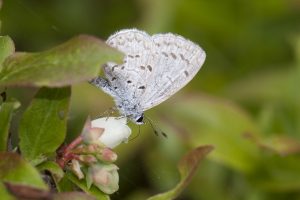
Getting the Blues: A View from Vermont
Although they measure barely an inch across, the azures (in the genus Celastrina) cause a mile of consternation among lepidopterists. Even as these butterflies present sparks of blue, their taxonomy remains cloudy and controversial. I won’t resolve it for you here. Instead, I’ll tell you some of what we know or suspect about these blues, […]
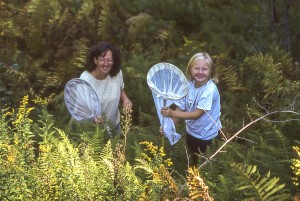
Making 2018 a Big eButterfly Year
Each year eButterfly keeps growing thanks to the dedication of many butterfly watchers and professional lepidopterists. In 2017 alone, 475 species were reported to eButterfly represented by nearly 12,000 checklists comprising almost 50,000 butterfly records and over 21,000 photographs. We now have recorded 741 butterfly species at over 35,000 locations across North America by nearly […]

Volunteer Data Reviewers Make eButterfly Shine
Anyone who regularly submits to eButtery has come to understand our data quality process. It is of paramount importance at eButterfly. Typos happen, misidentifications happen, and well-intentioned eButterfly observers sometimes just make mistakes. All of us at Team eButterfly have done it, and we’ll do it again. Mistakes are part of surveying butterflies. Our team of volunteer […]
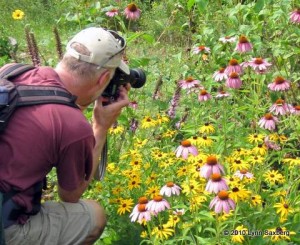
Leveraging Citizen Science for Butterflies
From a graduate school student’s lofty dream to a full-fledged citizen science program, eButterfly celebrates its 6th year with a new publication in a special issue of the journal Insects on butterfly conservation. The article – eButterfly: Leveraging Massive Online Citizen Science for Butterfly Conservation – highlights our accomplishments and outlines the bright future of […]
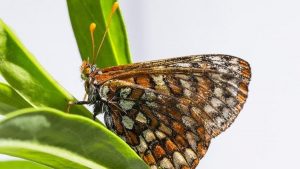
A Rare Butterfly Returns to Southern California
The endangered Quino Checkerspots (Euphydryas editha quino) are flying on the San Diego National Wildlife Refuge this spring for the first time in years. It selectively lays its eggs only on the Dwarf Plantain plant. Once found throughout California and into Mexico, the tiny Quino Checkerspot butterfly population is now extremely fragmented, which made it challenging for […]

November Butterflying in the Lower Rio Grande Valley
In the northern part of North America, most butterfliers in the fall hang up their binoculars and cameras and head into semi-hibernation. However, more than a few simply head south in November to the Lower Rio Grande Valley in Texas. I have joined them from Ontario in the past two years and have been astounded […]
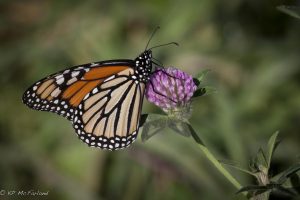
Canada’s Iconic Migrants at Grave Risk
From Coho Salmon to Caribou to the much cherished Monarch butterfly, migration is a key component of Canadian biodiversity. Migratory species, migration and movement all figured prominently at the semi-annual Committee on the Status of Endangered Wildlife in Canada (COSEWIC) deliberations on species at risk, held November 27 – December 2nd. Monarch butterfly migration is […]

Team eButterfly Visits Florida
Several members of the eButterfly team attended the 2016 XXV International Congress of Entomology from September 25 to 30 in Orlando, Florida. eButterfly sponsored a symposium titled, “Keeping Science in Citizen Science” during the meeting. The symposium was extremely well received and inspiring to all of us as many of the speakers demonstrated the value of citizen science data in […]
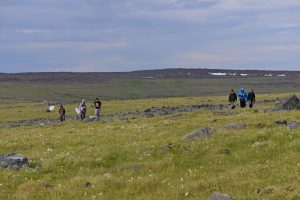
eButterfly and Nunavik’s Youth Team Up to Survey Arctic Butterflies
For the second consecutive year, eButterfly’s Max Larrivée teamed up with nine teenage Nunavik Inuits as part of a collaboration between the Montréal Insectarium and Nunavik Parks to survey butterfly diversity in the remote Québec arctic. The group led by Élise Rioux-Paquette, conservation officer for Nunavik Parks, and Elijah Ningiuruvik, Pingaluit National Park director, sampled […]

New Mission Monarch Project Powered by eButterfly
Butterfly enthusiasts across the country are being asked by Canadian experts to get out and look for milkweed plants, then to share their findings with Mission Monarch, a new project powered by eButterfly. The data collection protocol is very easy to follow and was designed so that everyone can participate. It’s a great way to enjoy the summer and some outdoor fun with friends or family.

Vermont Butterfly Big Year Takes Flight
With the help of an army of citizen scientists, the Vermont Butterfly Big Year aims to record every species of butterfly in Vermont this year. It’s a blend of science, education, competition, enjoyment, and a quest to monitor the changing nature of the state. Climate change, invasive species, habitat loss, and other environmental concerns are altering the […]

Make eButterfly Your New Year’s Resolution in 2016
Since its inception just a few years ago, eButterfly has grown in leaps and bounds thanks to the dedication of many butterfly watchers and professional lepidopterists. We hear from many users who tell us how eButterfly has helped them learn more about butterflies and has made their butterflying more fun and have more purpose. We also […]

The Secret Weapons of Cabbages: Overcome by Butterfly Co-evolution
For some of us in the north, a Cabbage White fluttering in the garden on a warm November day may be the last butterfly we see for the year. Recently, an international team of researchers has used the power of genomics to reveal the mechanisms of an ancient and ongoing arms-race between butterflies and plants, […]

eButterfly Visits the White House
This week eButterfly co-director Katy Prudic is at the White House in Washington, D.C. where she was invited to a small White House conference called Open Science and Innovation: Of the People, By the People, For the People. The meeting will focus on the new federal citizen science toolkit and other crowdsourcing sites like eButterfly. Read […]

‘No one looking’, so citizen scientist fills the gap
An avid citizen scientist, Mark Olivier, after having recorded and documented over 1,000 bird sightings has found another niche — butterflies. The era of citizen science has flourished with the advent of the Internet, partly because it provides a platform for bird watchers and outdoor enthusiast to share their sightings, said Olivier. Sault Naturalists have engaged […]

Epic James Bay Expedition
On June 19, 2015, five intrepid lepidopterists – Jacques Larivée, Chris Schmidt, Rick Cavasin, Peter Hall and Max Larrivée – set out to explore the east side of James Bay in Quebec. headed north from Ottawa, we travelled up the James Bay Highway, the northernmost paved road in eastern North America culminating at nearly 54 […]

The Waltz of the Hickory Hairstreaks
I have the great fortune of living in a mature hardwood forests on a two acre lot in Rigaud, Québec, Canada. This has allowed me to witness butterfly and moth behaviour and phenological events in ways I had never experienced in the past. This morning, similarly to last July, the first thing I saw when I […]

Admirals at Sea
Drifting in a boat several miles out in the Gulf of Maine, Chris Rimmer, director of the Vermont Center for Ecostudies, didn’t expect to see any butterflies. It was a warm July afternoon (well, for the coast of Maine) and Chris didn’t expect to see many birds either. But to his surprise, through his binoculars, […]

eButterfly’s Eclosure
The seed for eButterfly was planted over 60 years ago when Jacques Larivée started Études des Populations d’Oiseaux du Québec bird checklist program. Now with over 6 million records, it’s the longest-running bird checklist program in North America. The daily checklists have provided incredibly reliable information on changes in bird populations, phenology, and geographic and […]

December eButterflyer of the month: YOU!
To celebrate the completion of our 3rd eButterfly year, we wanted to take the time to thank all of our eButterflyers. Your contributions made 2014 our best so far. eButterfly is growing by leaps and bounds. Here are a few amazing statistics that are a testament to the power of citizen scientists when we come together and join […]

A Target on Your Back Is Useful
Life is hard, especially if you’re a butterfly. Always feels like there is a target on your back. Turns out some of those targets (AKA wing eyespots) are useful to deflect attacks away from the butterfly’s vulnerable head and body. Having eyespots allows butterflies to live longer and lay more eggs. Surprisingly this deflection hypothesis […]

November’s eButterflyer of the Month : Daniel Jones
This November’s eButterflyer of the month is Daniel Jones from Texas. Dan joined eButterfly last spring and has been an extremely productive eButterfly user and our top Texas contributor ever since! He is currently ranked second for the number of species recorded in 2014 in our top 100 with 132 species from 47 checklists contributed […]

Looking for a Few Good Cabbage Whites
Hey butterfly lovers, graduate students Sean Ryan at the University of Notre Dame and Anne Espeset at the University of Nevada, Reno are asking for help from fellow butterflyers. These students are investigating how different environments have changed the genomes of the ubiquitous, introduced cabbage white (Pieris rapae). The findings of this project will also […]

Sharing Your Historical Data with eButterfly
By Peter Hall, Ottawa, Ontario My butterfly watching began in childhood when I chased a Cabbage White around a schoolyard in Ajax, Ontario, and caught it in my cap. Almost sixty years later I’m still at it. In the early days, I did some collecting, but did not keep any field notes as there was nobody to […]

August eButterflyer of Month: Colin Walton
This August’s eButterflyer of the month is one of our youngest contributors, 11 year old Colin Walton from Toronto, Ontario. Colin has been exposed to insects throughout his life by his mother, Antonia Guidotti, an entomologist at the Royal Ontario Museum and co-author of the new ROM Field Guide to the Butterflies of Ontario. As […]

New Butterfly Field Guide for Ontario
eButterfly is very proud to be a part of the very first field guide on the butterflies of Ontario. It highlights the diversity of life by featuring 167 species of butterflies known to occur in Ontario. The ROM Field Guide to Butterflies of Ontario includes descriptive species accounts, flight season phenograms, and striking field photography […]

July eButterflyer of Month: Gary Anweiler
This July’s eButterflyer of the month is Alberta’s own Gary Anweiler. Gary has been associated with the Strickland Entomological Museum for 25 years now and wrote many of the lepidoptera species pages for the Virtual Museum site and is co-author of the annotated list of the Lepidoptera of Alberta, Canada published in 2010 and updated in 2014. He […]

Welcome to eButterfly 3.0!
We are pleased to announce the release of eButterfly 3.0, an updated version of the powerful Internet-based program currently used by thousands of butterfly enthusiasts. eButterfly is a free, user-friendly way for butterfly watchers across North America to record, archive and share their observations anytime, anywhere. It is also an important tool for conservation, providing […]